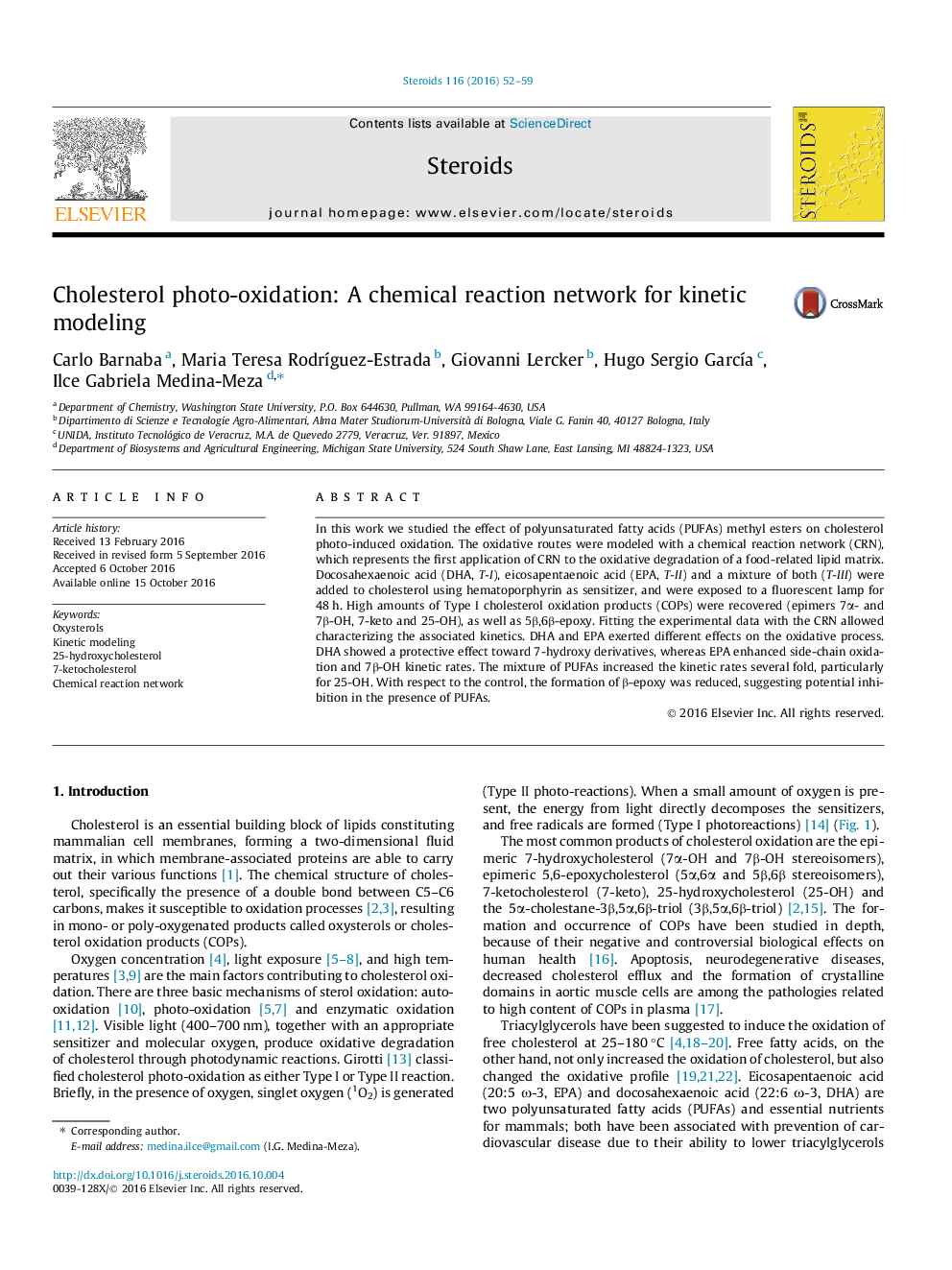| Article ID | Journal | Published Year | Pages | File Type |
|---|---|---|---|---|
| 5516751 | Steroids | 2016 | 8 Pages |
â¢The effect of polyunsaturated fatty acids (PUFAs) methyl esters on cholesterol photo-oxidation was studied.â¢PUFAs enhanced the formation of 5β,6β-epoxy, thus decreasing the amounts of 7(α,β)-hydroxy.â¢Chemical reaction network modeling was used to obtain the kinetic rates.â¢PUFAs increased the kinetic rates of 25-hydroxycholesterol formation.
In this work we studied the effect of polyunsaturated fatty acids (PUFAs) methyl esters on cholesterol photo-induced oxidation. The oxidative routes were modeled with a chemical reaction network (CRN), which represents the first application of CRN to the oxidative degradation of a food-related lipid matrix. Docosahexaenoic acid (DHA, T-I), eicosapentaenoic acid (EPA, T-II) and a mixture of both (T-III) were added to cholesterol using hematoporphyrin as sensitizer, and were exposed to a fluorescent lamp for 48 h. High amounts of Type I cholesterol oxidation products (COPs) were recovered (epimers 7α- and 7β-OH, 7-keto and 25-OH), as well as 5β,6β-epoxy. Fitting the experimental data with the CRN allowed characterizing the associated kinetics. DHA and EPA exerted different effects on the oxidative process. DHA showed a protective effect to 7-hydroxy derivatives, whereas EPA enhanced side-chain oxidation and 7β-OH kinetic rates. The mixture of PUFAs increased the kinetic rates several fold, particularly for 25-OH. With respect to the control, the formation of β-epoxy was reduced, suggesting potential inhibition in the presence of PUFAs.
Graphical abstractDownload full-size image
